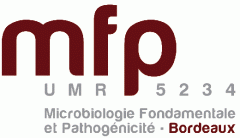Our team is interested how viruses interfere with cellular processes during virus entry and the priming of viral genomes for gene expression and replication. Our focus is on the spatial and temporal organization of host-pathogen interactions during these processes with the goal to understand and identify novel drug targets and points of therapeutic intervention. We have specialized in the in vivo imaging of viral nucleic acids and viral interactions with host intrinsic defense mechanisms. Our team is headed by a basic scientist and a medical virologist. This unique combination allows us to study fundamental aspects of virus biology and make the link to practical clinical needs. We are also strongly involved in virology teaching at Bordeaux University covering the vast majority of virology related lectures and practical courses in the medical faculty and the natural sciences faculty.
Pretext : Entering viruses are faced with cell intrinsic immunity trying to combat the invader. Early in infection the cell has two chances, either physically eliminating incoming viruses (degradation) or if this doesn’t work preventing viral genomes from transcriptional activation and replication (silencing). On the other side the virus has to overcome cell intrinsic immunity to set up a productive infection. Often overlooked, the entering virus only possess the proteins and nucleic acids composing the particle to divert, block and overcome cell defense mechanisms. We hypothesize that protein and nucleic acid components of the incoming virus particle fulfill a dual role having structural functions but also being bioactive molecules to deflect, divert and control intrinsic immunity. To address this hypothesis, we study several aspects of the life cycle of human adenoviruses (AdV) and compare our findings with other viral systems. We use advanced imaging (quantitative microscopy, life cell imaging), biochemistry and cell biology assays to achieve this goal.
